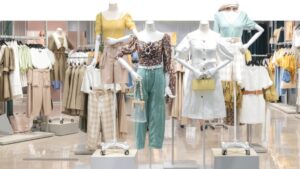
A roundtable discussion organised by Apparel Export Promotion Council (AEPC), with major apparel brands, representatives of top fashion houses including Tendam Global Fashion, Impulse, Kas group Asia. LiverPool India, Superdry PLC, New Times, Global Sourcing, JCPenney, Triburg, Source Net Global and more, discussed their perspectives and the road ahead to reach 40 billion USD of RMG exports by 2030.
The Meeting was attended by Rohit Kansal, Additional Secretary, Ministry of Textiles, with Sudhir Sekhri, Chairman AEPC, Premal Udani Chairman EP, Mithileshwar Thakur SG AEPC and industry representatives Harish Ahuja from Shahi Exports, Virender Uppal from Richa Global Exports Pvt Ltd and HKL Magu from Jyoti Apparels along with others also attending.
A virtuous cycle favouring investments and growth has been established, according to Kansal, by a stable and encouraging policy environment at the federal level and a robust set of incentives provided by the states. Investors might anticipate a thriving ecosystem with plug-and-play amenities since at least four PM MITRA Parks are scheduled to award land to them this quarter.
Speaking about the goal of US $ 40 billion in RMG exports by 2030, Sekhri urged the government to implement reforms in Indian labour laws, enhance workforce skill development programs, and create flexible and industry-friendly fabric import policies.
Brand executives stated that India must enter core manufacturing if it is to advance. Upgrading exports requires consistent quality and product integrity.
India’s raw material base and design expertise are its greatest assets, which should be capitalised on. Brand representatives recommended concentrating on value-added products in order to capitalise on India’s advantages.
Fast-tracking manufacturing and increasing capacity are two of the main demands made on brands. It is also necessary to solve the skilled labour shortage that is impeding India’s progress. Additionally, brand leaders indicated that FTAs are helping us and that the volume of orders has increased.
Additionally, it was recommended to broaden India’s product offerings to better meet the demands of the global market. To boost demand, India must concentrate on outerwear.
Sweaters are the most sought-after Indian product in recent years, according to several brands, and the industry needs to be prepared to meet this growing demand. 11.45 million sweaters were exported from India to the rest of the world in FY 2024–2025 (April–November).
In order to increase exports, brands also advised the industry to focus on global compliance and automation. Additionally, India has to enhance its inbound and outbound logistics and concentrate on shorter lead times. speedier port approvals can contribute to speedier delivery, which is what brands seek when purchasing their goods.
The absence of processing houses is one of the main deficiencies mentioned by the brands for India. They recommended providing incentives for the establishment of processing facilities.






